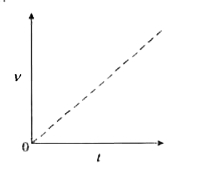Free fall of an object (in vacuum) is a case of motion with
uniform velocity
uniform acceleration
variable acceleration
constant momentum
The correct Answer is:B
All bodies fall freely with the same acceleration (uniform acceleration).
Similar Questions
Show here are the velocity and acceleration vectors for an object in several different types of motion. In which case is the object slowing down and turning to the left ?
View Solution(a) What do you mean by the term free fall ?
(b) During a free fall, will heavier objects accelerate more than lighter ones?View Solution
Knowledge Check
- Question 1 - Select One
Free fall on an object in vacuum is a case of motion with
A1. uniform velocityB2. uniform accelerationC3. variable accelerationD4. uniform speed - Question 2 - Select One
Free fall on an object in vacuum is a case of motion with
Auniform velocityBuniform accelerationCvariable accelerationDuniform speed - Question 3 - Select One
Show here are the velocity and acceleration vectors for an object in several different types of motion. In which case is the object slowing down and turning to the left ?
A B
B C
C D
D
During a free fall , will a heavier object accelerate more than a lighter one ?
View SolutionFor a freely falling object we can write Newton's second equation of motion as ………………
View SolutionDuring the free fall of an object, which of the following energies increases at any point in its path ?
View SolutionThe figure shows the speed as a function of time for an object in free fall near the surface of the earth. The object was dropped from rest in a long evacuated cylinder .

If the same object were released in air, the magnitude of its acceleration would begin at the free-fall value, but it would decrease continuously is zero as the object continued to fall. For which one of the choices given does the solid line best represent the speed of the object as a function of time when it is dropped from rest in air ?
Note: The dashed line shows the free-fall under vacuum graph for comparison.View SolutionIf an object is released in air, the magnitude of its acceleration would begain at the free-fall value, but it would decrease continously to zero as the object continued to fall.
for which one of the choices given does the solid line best represent the speed of the object as a function of time when it is dropped from rest in air?
Note The deshed line shows the free-fall under vacuum graph for comparison.View Solution

